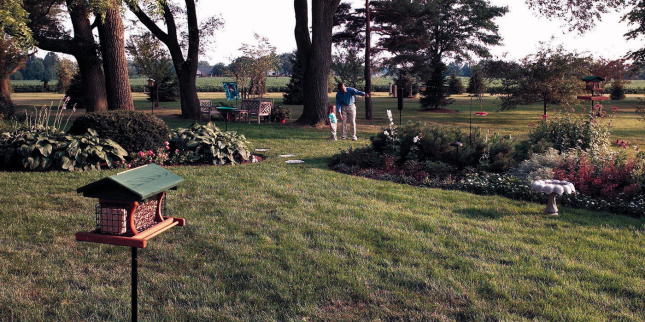Create Your Wildlife Habitat
Wild Birds Unlimited encourages everyone to create a bird and wildlife-friendly habitat in their backyard; it’s fun and easier than you might think.
When creating a wildlife habitat, the habitat elements are food, water, cover and places to raise young. Carefully selected plantings can provide food, cover and/or places to raise young.
Landscaping for the ideal wildlife habitat should include plants ranging in size and density from small evergreen shrubs to tall, full-grown trees so that birds and other wildlife can choose the appropriate cover they need for feeding, hiding, courting and nesting activities. For example, dense plantings of shrubbery provide safe areas for many species of wildlife to mate, build nests and raise their families.
Develop a habitat plan for your backyard. Take an assessment of what you already have and then map out a landscaping plan that includes all the plants and natural features in your yard.
For the best results, use native plants. Plants native to the soils and climate of your area provide the best overall food sources for wildlife. In addition, native plants generally require less fertilizer, water and effort to control pests. Native plants may support 10 to 50 times more species of native wildlife (mostly insects, the basic wildlife food) as do exotics (plants that are not native to your area). Too often, exotics brought to our continent for their horticultural or wildlife value grow and spread rapidly, taking over farm and woodland and decimating native plants and animals
Wild Birds Unlimited is the proud champion of National Wildlife Federation’s Certified Wildlife Habitat Program. Provide one or more of the above elements to create a bird and wildlife-friendly habitat. Go online, to learn more - www.wbu.com/certify-your-yard. You’ll not only help the wildlife in your yard, you’ll also be able to have your yard officially certified.
(Kathy and her husband, John, own and operate the Wild Birds Unlimited, located in Billings and at wbu.com/billings. She is a Certified Bird Feeding Specialist and is past president of the Yellowstone Valley Audubon Society).

